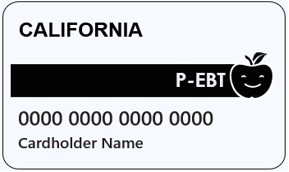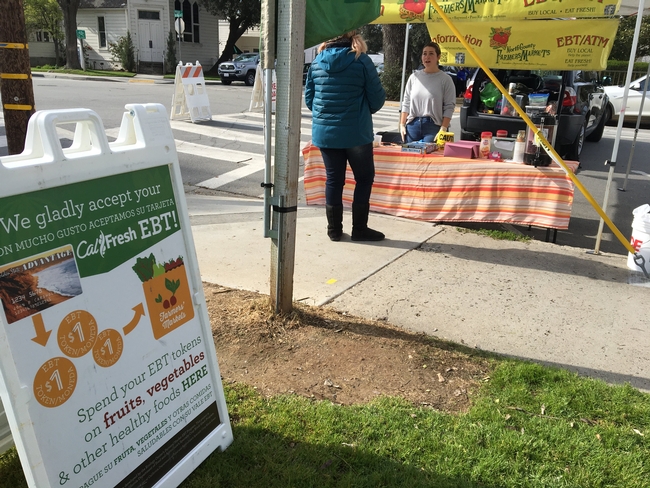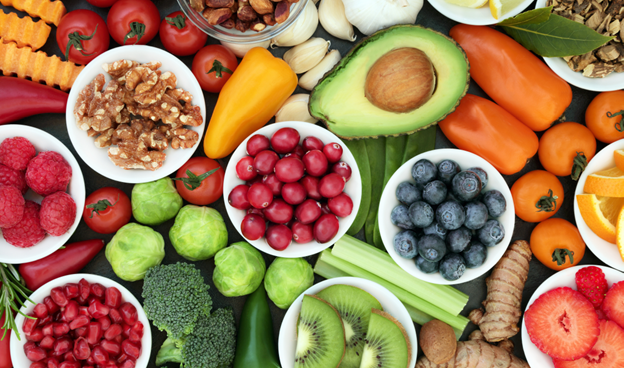Did you get a P-EBT card in the mail and wonder, “what is this?” You're not alone. When you're ready to activate your child's P-EBT card, call the number on the back to set-up a pin and check your balance. That little card could have several hundred dollars on it. With the cost of food lately, that can be a big help.
P-EBT (Pandemic Electronic Benefits Transfer) is a food benefit card that can be used like an ATM card to purchase food - with a few exceptions. P-EBT is similar to CalFresh (also known as SNAP, EBT, or food stamps) and usually you cannot use these benefits to buy hot foods or any foods that are intended to be eaten on-site. I say “usually” because there is a waiver in place through February 20, 2023 which allows people to buy hot foods temporarily with CalFresh and P-EBT in certain counties that were impacted by severe winter storms.
So now that you know a little about that white card, here are 5 things to know about P-EBT:
1) You can use your P-EBT card at many local farmers markets. Some markets will even double the first $10-$15 you redeem if they have the Market Match program. Locally, markets from Paso Robles to Lompoc to Santa Barbara accept CalFresh and P-EBT, and many also offer Market Match. Locate a market near you by visiting the Farmers Market Finder. Once at the market, look for the market manager's booth or a sign that says “EBT Accepted Here.” The person at the table will walk you through the rest.
2) P-EBT and EBT/CalFresh programs support a healthy economy. The US Department of Agriculture estimates that every $1 spent on SNAP (known as CalFresh in California) induces $1.54 in economic activity. This supports job creation, farm income, and income for all involved in the production, distribution, marketing, and sale of foods. In addition, the program helps stabilize the economy. In an economic downturn when incomes fall, spending on SNAP tends to go up (because more people now qualify for the benefits). As people spend their food benefits, income is generated for everyone along the food chain.
3) P-EBT and EBT/CalFresh support healthier people. The main goal of the SNAP/CalFresh programs are to reduce food insecurity. Food insecurity is when people don't have access to enough food for an active and healthy life. In a 2017 study, researchers found that, as food insecurity worsens, the risk for chronic diseases like high blood pressure, diabetes, asthma, and heart disease goes up. P-EBT and CalFresh help people put food on the table, reduce food insecurity, and can lead to improved health.
4) You DON'T need to apply for P-EBT but you DO need to apply for CalFresh/EBT. P-EBT cards are mailed directly to families with children who meet eligibility criteria. If you got a P-EBT card, but are not currently enrolled in CalFresh, you may want to consider applying. Many people who are eligible for CalFresh are not currently getting the benefits. If you think you might qualify for CalFresh, consider applying today. You can apply online or in-person (Find your local DSS Office: SLO DSS, Santa Barbara DSS. If you worry about having enough money for food, CalFresh can help!
5) P-EBT is not a public charge. Receiving CalFresh or using P-EBT benefits does not affect immigration status. Further, households who have a mix of documented and undocumented people can still apply. Find out more at GetCalFresh or KeepYourBenefits.
Now that you're ready to use those P-EBT benefits, find some healthy low-cost recipes at EatFresh and make your shopping list today.
What other questions do you have about P-EBT, EBT or CalFresh?
Author - Area Director for UCCE in San Luis Obispo, Santa Barbara, and Ventura Counties


